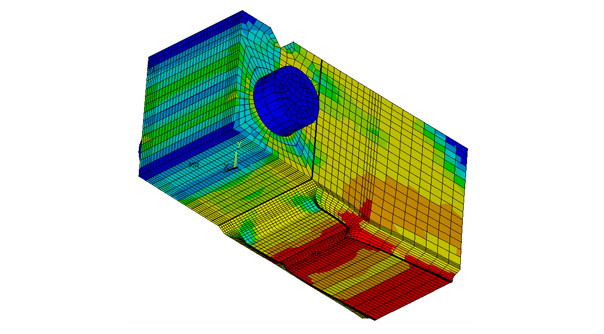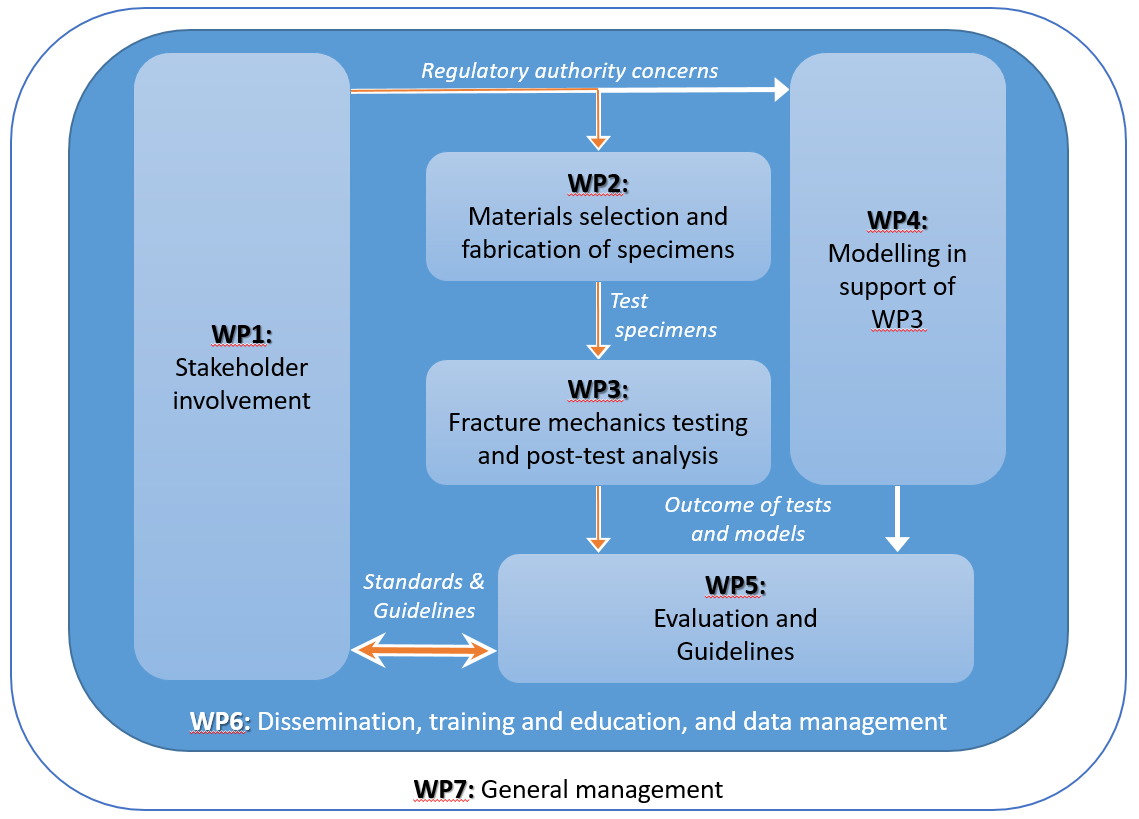Methodology

In order to structure the project, the work is broken down into work packages. The methodology described here follows this WP structure as well.
To ensure a valuable output of the project, it is intended to have a continuous effort to address the stakeholder concern by regularly involving the regulatory bodies, code and standardization committees, the End User Group (EUG) and the Scientific Advisory Committee (SAC).
In the material selection and test matrix development, material will be carefully selected based on established criteria with priorities to material having:
- well characterized material in baseline and irradiated condition (typical more than 400 data available)
- open data available
- significant sensitivity to irradiation and material availability.
The machining and testing of irradiated material will be shared by different laboratories to share the costs and evaluate the repeatability and reproducibility. The procedure will be agreed upfront and any deviation will be carefully evaluated.

Modeling activity such as illustrated in the image to the left is performed in support of the material testing. It will also be very valuable to address current limitations in code and standards when small specimens are at stake. Rationalized experimental data supported by proper modeling activity will be used in the dialog with code and standard to implement changes that will facilitate the use of small specimen while keeping or better increasing confidence in the results.
One always needs to realize that the project is only made possible thanks to the EU taxpayer and therefore one needs to maximize the benefit of the project to all of Europe. In that respect the project will perform communication and dissemination activities to reach out to the overall public by reducing the threshold by vulgarization activity and dissemination in open access. Training and Education activities will be advertised well beyond the project community thanks to a well-established network. Keeping in mind the start of the digital era with big data, artificial intelligence and decentralized access to information, the project will enforce a data management plan to maximize open research data and ensure data perennity well beyond the end of the project such that data will remain accessible, searchable and reusable independently of the system used.

The Program evaluation and review technique (PERT) network chart allow to visually identify the different activities and their relationship allowing to calculate slack available for each activity, identify critical path and use advanced probabilistic tools to evaluate the best estimate and deviation execution time of the project.
The PERT diagram for this project is given at WP level in order to provide the best overview. The actual project will be followed using a PERT diagram defined at task level. The slack of each activity is embedded in the task duration.
The critical path of the project is shown in red. In WP 1, discussion with the SAC, EUG, Standardization Committee and Nuclear Regulatory Bodies Operators and Research Organizations will result in the understanding of open concerns of the involved parties. These concerns will be incorporated in the activities of WP 2, 3 and 4. WP 2 (material selection and specimen fabrication) is needed as input for WP 3 (fracture mechanics testing). WP 4 can happen in parallel over the full period of the project. The output of WP 3 and 4 will be used in WP 5, where the guidelines for future testing will be settled. These guidelines will be optimized in close collaboration with the Standardization Committee (WP 1).
